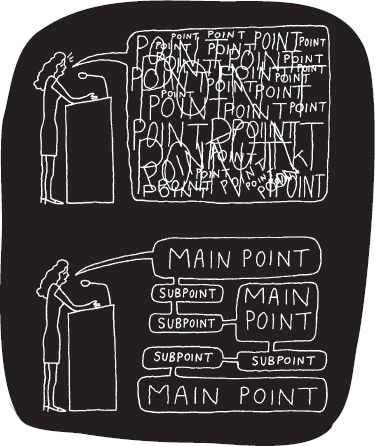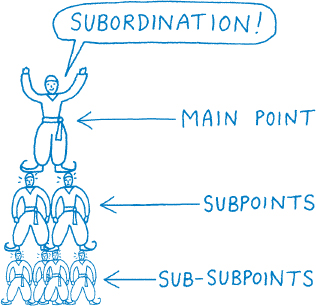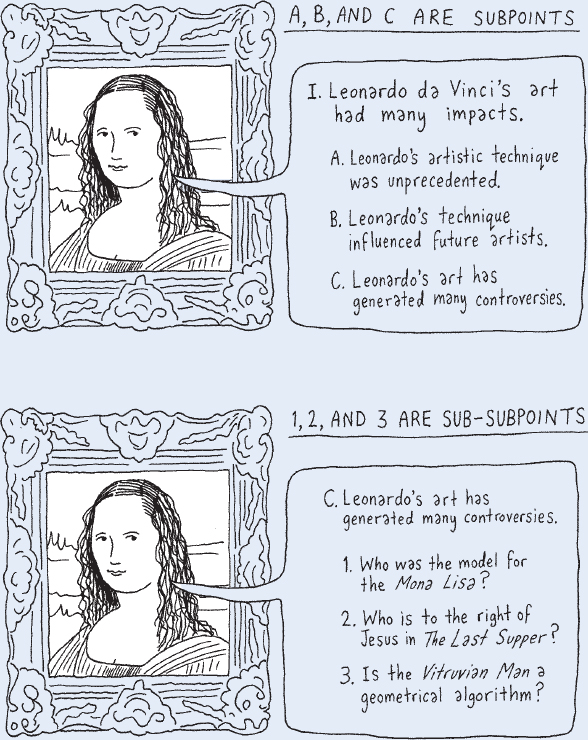Subordination and Coordination
Printed Page 259
The principle of subordination is the key to a well-organized speech. Using subordination means creating a hierarchy of points and their supporting materials in your speech. Thus, main points are the most important (or highest) level of subordination, and supporting materials used to develop a main point (called subpoints) are subordinate to that main point. (There should be at least two subpoints to support each main point.) In the same way, materials that support subpoints are called sub-subpoints, and these sub-subpoints are subordinate to their corresponding subpoint. A well-organized speech also features coordination. Each main point is coordinate with other main points—that is, they are at the same level of significance—just as subpoints are coordinate with other subpoints, and so on.


Sound confusing? It isn’t, really. To see how subordination and coordination work, compare the subpoints (indicated by capital letters) supporting each main point (signaled by roman numerals) in the following outline for an informative speech on filmmaking in India:

- Culture plays an important role in Indian filmmaking.
- Indian moviemakers developed a style of their own by the 1950s, based on the teachings of Natya Shastra (Science of Theater), a one-thousand-year-old Hindu book. Entertainment was to embody nine essences: love, hate, sorrow, disgust, joy, compassion, pity, pride, and courage.3
- In Indian culture, women are expected to be closely tied to their families. Thus, female stars are often chaperoned by their mothers, who sit at the edge of the set.4
- There are differences between Indian-made films and films made in the United States.
- In India, films need not follow the linear, scripted story line that is popular in Western movies. Of any one hundred films made in India, about three will have scripts prepared in advance, according to screenwriter Anjum Rajabali.5
- Many Indian films do not address serious social issues. Director Shyam Bengal notes that mass cinema “is nothing more than a series of continuing sensations. New pictures are made to imitate whatever was most successful previously in order to mop up the largest audience.”6
Notice that both subpoints for main point I pertain to the subject of the main point: the role of culture in Indian filmmaking. These subpoints are subordinate to main point Next, consider main point Subpoint IIA supports the main point, whereas subpoint IIB does not because it fails to explain why U.S.-made and Indian-made films are different. You can probably think of many American-made films that also have little serious social content. Because subpoint IIB is not relevant to the idea that U.S.- and Indian-made films are different, it is not subordinate. Therefore, the speaker should not include it under main point II.

Click the "Next" button to try Video Activity 9.1, “Overholser, What Is Good Journalism?”